Russian army on the eve of the Northern War
In the second half of the 17th century, Russia experienced an economic boom. This became a prerequisite for creating a powerful army and fleet. But by the beginning of the war with Sweden, Russia did not have a unified military system. The army consisted of military branches created in different eras: the local noble cavalry (the heiress of the feudal squads), the archery army (created under Ivan the Terrible), the regiments of the "foreign system" - soldiers, reiters, dragoons (created in the 17th century). Plus various irregular units, including the Cossacks. In wartime, warriors, military people were also attracted to the service. They were recruited from the draft population (taxable, who carried a complex of duties - taxes). They helped the gunners, served in the wagon train, participated in the creation of fortifications, camps, etc. The fleet was only in the Sea of Azov.
local cavalry convened only with the outbreak of war. With the end of the war, people returned home. The armament was the most diverse, the rich boyars, nobles, and their servants were better armed. In such detachments, it was bad with organization, management, discipline, and supplies. Servants of the nobility, boyars in general could be untrained in military affairs. It is clear that the noble cavalry could effectively fight the hordes of nomads on the southeastern borders of Russia, but it could no longer resist the regular armies of Europe. In addition, part of the boyars and nobles had a bad motivation, they wanted to quickly return home to their household. Some did not show up at all, or were "late." The combat value of the many thousands of noble troops sharply reduced the increase in the role of firearms. weapons, increasing its efficiency and rate of fire. The cavalry could not withstand the massive gunfire and gunfire. The infantry became more important than knightly, noble cavalry. The importance of infantry and the decline of the value of the cavalry of the nobles was already noticeable in Russia in the 17 century (in the West even earlier).
By 1680, the local cavalry of the centenary service, together with the serfs, accounted for only about 17,5% of all Russian armed forces (about 16 thousand people). Peter liquidated the local army already in the process of the war with Sweden. Although at the initial stage of the Great Northern War, the noble cavalry, under the leadership of B.P. Sheremetev, inflicted a number of defeats on the Swedish forces. Although it is known that several regiments fought after the Battle of Narva. Most of the boyars and nobles, from the local cavalry, were transferred to the dragoon and guard regiments, many of them made up the officers of the regular army.
archers were more modern troops. They carried a permanent service, underwent some training. In peacetime, the archers carried out city service - guarded the royal court, the king during his trips, were busy guarding in Moscow and a number of other cities, became messengers. In their free time from war, service, they were engaged in crafts, trade, tillage, gardening, because the royal salary could not fully meet the needs of the servicemen and their families. The Streltsy army had an organization - it was controlled by the Streltsy order. He was in charge of the appointment to the service, the payment of salaries, and supervised military training. Throughout the 17th century, the skills of regular combat were introduced into the archery regiments.
The combat effectiveness of the archers was highly appreciated by contemporaries, who believed that the main force in the Russian army was the infantry. Streltsy regiments were widely used in various wars, participating both in the defense of fortresses and in long-distance campaigns (for example, the Chigirin campaigns of 1677-1678). But gradually their role began to decline, they were strongly attached to their daily activities, the life of the townships (the majority were close in status to the lower classes of the township population). As a result, in a number of uprisings of the 17th century, their “unsteadiness” appeared - political unreliability, the archers were ready to support those who offered more. In the uprisings of 1682 and 1698, the archers became the main driving force. As a result, the growing royal power began to think about the elimination of this social stratum. After the Streltsy rebellion of 1682 (“Khovanshchina”), Tsarevna Sofya Alekseevna ordered the disbanding of 11 out of 19 Moscow Streltsy regiments. Several thousand people were settled in different cities. Peter I, after the suppression of the uprising of 1698, completed this process. It should be noted that a significant part of the cadres of the Streltsy troops joined the emerging regular army. And the city archers survived the era of Peter.
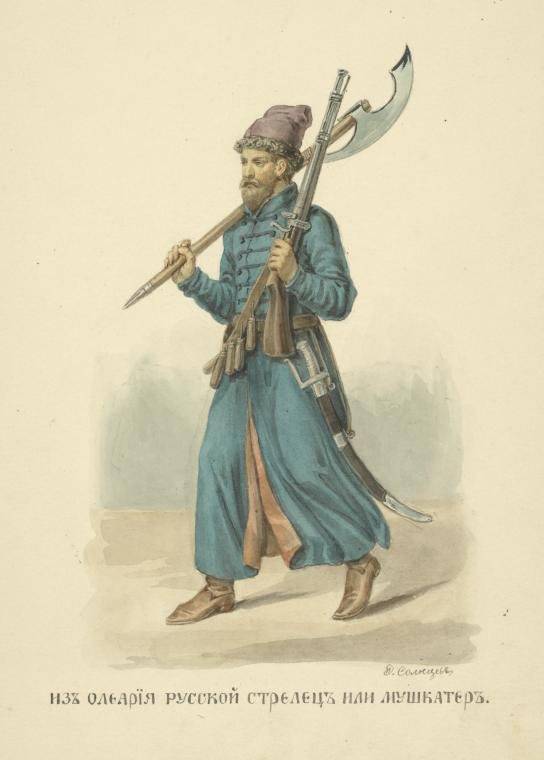
Russian artillery, "cannon outfit", was formed like archery regiments. Gunners for their service received monetary and grain salaries, or a land allotment. The service was hereditary. In peacetime, they served in the garrisons of cities and fortresses. In their free time, gunners could engage in trade and craft. All Russian artillery in the 17th century was divided into siege and fortress guns (“city outfit”), light and heavy field artillery (“regimental outfit”). The gunners were controlled by the Pushkar order (a military command and control body created under Ivan the Terrible). The order was in charge of recruiting people for service, their salary, promotion or demotion, sending to war, etc. In 1701, the Pushkar order was transformed into an artillery office, and in 1709 - into an artillery office.
A practical guide for gunners was Anisim Mikhailov Radyshevsky's "Charter of military, cannon and other matters relating to military science" (dated 1621). I must say that the Russian artillery masters at that time practically solved the problem of creating rifled and breech-loading guns, far ahead of the level of development of technology of that time. At the end of the 17th century, there was a tendency to replace old tools with more advanced ones and to unify them by types and calibers. By the beginning of the war, Russian artillery (very numerous) had the same shortcomings as the artillery of Western countries - a lot of different types, calibers, the guns were heavy, inactive, and had a low rate of fire and range. The troops had many guns of old designs.
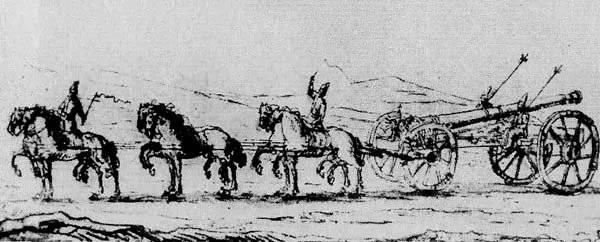
Cannon large outfit (siege artillery). E. Palmquist, 1674.
Shelves "foreign system." In 1681, there were 33 soldiers (61 thousand people) and 25 dragoon and reiter (29 thousand people) regiments in Russia. At the end of the 1630th century, they accounted for more than half of all the armed forces of the country and at the beginning of the 1630th century were used to form a regular Russian army. Connections of the "foreign system" began to form back in the Time of Troubles, Mikhail Skopin-Shuisky. The second organization of the regiments of the "foreign system" was carried out in the early 1654s, preparing for the war for Smolensk. In the late 1667s, they were used to guard the southern borders; during the Russian-Polish war of 100-20, the regiments of the new system became the main part of the Russian armed forces. Regiments were created from "hunting" free people (volunteers), Cossacks, foreigners, "shooter's children" and other social groups. Later, and from data people according to the model (organization, training) of Western European armies. People served for life. A soldier was taken from 25 yards, and later - from XNUMX-XNUMX yards. Annually and monthly they were given monetary and grain salaries or land allotment. Reiter regiments were recruited not only from subordinate people, but also from petty, landless nobles and boyar children. For their service, they also received a monetary salary, and some of the estates. The soldier regiments were infantry, reiter and dragoon cavalry. The dragoons were armed with muskets, swords, reeds and short lances and could fight on foot. Reiters relied on pistols (there were several of them), unlike dragoons, reiters, as a rule, did not dismount, but fired directly from a horse, melee weapons were auxiliary. During the Russian-Polish wars, horse spearmen - hussars - stood out from the composition of the Reiter.
I must say that, unlike the regiments of the Western armies of that period, which were recruited from mercenaries of different nationalities, the Russian regiments were mono-ethnic in composition, and therefore more morally stable. The regiments of the "foreign system" became the prototype and core of the future Russian regular army. They had a state supply of weapons, ammunition, food, more or less regular combat and tactical training, a more harmonious hierarchy of officer ranks, division of the unit into companies and squadrons, the first official manuals for training in military affairs were created.
Weak points: after the end of hostilities, a significant part of the officers dispersed home, under the banner of the regiment only part of the officers remained, soldiers, dragoons, reytar. Therefore, military training could not be done systematically. In addition, the country's industry could not provide the shelves of the same type of weapons, equipment and uniforms.
military industry. The emergence of manufactories in Russia contributed to the development of the military industry. By the end of the 17th century, there were 17 enterprises in Russia that produced handguns and artillery pieces. For example, the Tula-Kashirsky factories produced 15-20 thousand muskets in 300 working days. Russian gunsmiths were persistently searching for the modernization of domestic handguns. New models of weapons were created - “screwed squeaks”, the design of rifle locks was improved - they were widely used under the name “locks of the Russian case”. But due to the weakness of the industry, it was necessary to carry out rather significant purchases of weapons from abroad.
Reform of Prince V. V. Golitsyn. At the end of the 17th century, the favorite of Princess Sophia, Prince Vasily Golitsyn, made an attempt to reform the Russian armed forces. Streltsy orders were transformed into regiments, instead of hundreds of companies, companies were introduced into the noble cavalry. In 1680-1681, the entire European part of Russia was divided into 9 military districts (“categories”): Moscow, Seversky (Sevsky), Vladimir, Novgorod, Kazan, Smolensk, Ryazan, Belgorod and Tambov discharges (Tula or Ukrainian was abolished, Siberian discharges transformations were not affected). All military men of the state were assigned to the districts. In 1682, localism was abolished, that is, the procedure for distributing official places, taking into account the origin and official position of the ancestors.
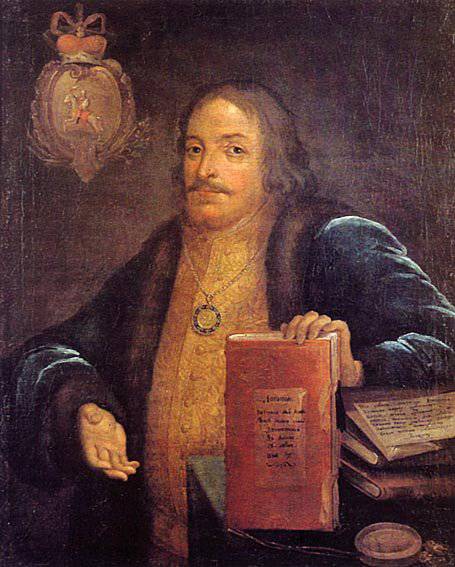
Prince Vasily Vasilyevich Golitsyn.
In this way, by the time Peter came to power, the Russian armed forces had already made significant progress towards becoming a regular army. This process had only to be completed, formalized, consolidated, as Peter I did. Only the achievements of the previous era in the field of military development, economic development, allowed the reformer king in the shortest possible time (very small historical term) to create a regular army, navy, to develop the military industry.
Peter's reforms to the start of the Northern War
Funny troops. Even under Tsar Alexei Mikhailovich, out of several dozen children, the “Petrov Regiment” was organized for the tsarevich. Gradually, the game turned into a real military-practical training, adults began to be recorded as "amusing" ones. In 1684, in the village of Preobrazhensky near Moscow, the amusing town of Pressburg was built, where elements of the assault on the fortress were practiced. In 1691, the amusing troops received the correct organization and they were divided into two regiments - Preobrazhensky and Semenovsky, they were uniformed according to the Western European model. Based on this experience, Peter developed a program for the military professional orientation of young men. It included the following elements: the development of love for the sovereign and the Fatherland; development of discipline close to military; feelings of honor and camaraderie; familiarization of young people with weapons and the skills to use them; the development of physical strength and dexterity in boys aged 9-12 through outdoor games and gymnastic exercises, military games; development of courage and initiative in children through special games (with a certain degree of danger, requiring courage and intelligence); knowledge of the History of the Fatherland and the historical tasks of the state by acquainting children with the brightest and most gloomy pages of our past, with the study of the forces and aspirations of our enemies.
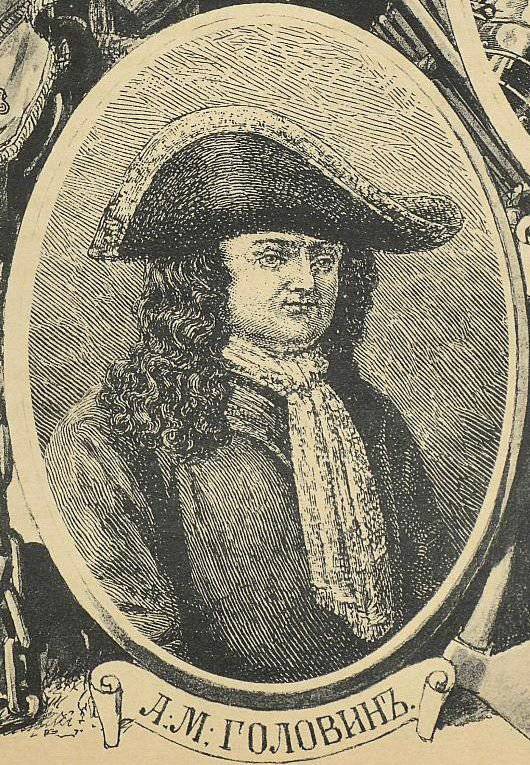
Avtonom Mikhailovich Golovin
The Semyonovsky and Preobrazhensky regiments, together with the elected (best) soldier regiments of F. Lefort and P. Gordon, formed the backbone of the new army. Regular military training was carried out in these units, and the tsar himself looked after them. Together with Peter, the basics of military affairs were mastered by his closest associates - A. Golovin, M. Golitsyn, A. Veide, F. Apraksin, A. Repnin, J. Bruce, A. Menshikov, etc. The Semenovsky and Preobrazhensky regiments became the forge of officer personnel for other military formations.
Peter laid the foundation for the correct tradition of officers - to serve from the lower ranks. He started as a drummer, in 1691 he received the rank of sergeant, in 1693 - scorer of the Preobrazhensky Regiment. This allowed him to develop in himself the qualities necessary for a commander. Peter got acquainted with the military literature of that time, studied the sciences related to military and naval affairs - geometry, fortification, astronomy, shipbuilding, artillery, etc.
They began to conduct large-scale military maneuvers, so up to 1694 thousand people took part in the Kozhukhovsky campaign in September-October 40, they were divided into two armies. During the exercises, they worked out the methods of siege and assault of the fortress, crossing a water barrier, and the field skills of the troops were checked. In the history of the military art of Russia, this was a new phenomenon. Training was conducted under the guidance of foreign officers. They began to introduce elements of linear tactics.
The Azov campaigns of 1695-1696 demonstrated the advantages of the new regiments over the forces of the local and archery troops. Streltsy, who participated in the campaign, were left in the south, entrusting them with garrison service. The number of elected soldier regiments was significantly increased. In addition, Peter decided to use the experience of Western European countries to reorganize the army; at the beginning of 1697, 150 people were sent abroad to train officers. Major A. Weide was sent to study the experience of organizing and organizing the best Western armies. He studied the experience of the French, Dutch, Austrian, Saxon armies and in 1698 provided a detailed analytical count. The main conclusion of his report: the basis of victory is "diligent training". The revised Veide report became a source for the creation of charters, instructions, instructions for the Russian regular army.
For the regular army needed personnel and a lot of weapons, uniforms. Various kinds of ammunition. Already in 1698, about 700 foreigners arrived in Russia. The Grand Embassy bought 10 thous. For muskets and other weapons abroad. By August 1698, the main preparatory activities for the reform of the army were completed.
Reform 1699-1700
The 1698 Strelts uprising of the year only accelerated the reform process. The Strelets regiments were disbanded and in 1699, they began to recruit people into “direct regular troops”.
Peter and his associates developed the first statutory documents. They were quite simple, everything superfluous was discarded, they took only those positions that were necessary for the combat training of soldiers. The documents were distinguished by their clarity and simplicity of presentation. In 1699, A. Golovin's "Military Articles" were compiled, in 1700 Peter's "Short Ordinary Teaching" was printed. In 1700, charters were issued regulating the internal life of the troops "" Military articles, how a soldier should keep himself in life and how to behave in the ranks and in teaching" and "Company infantry ranks".
The training of domestic officer cadres has intensified. In early May 1699, Peter held a review of Moscow stewards, and then other nobles. Their regular training began. The negligent were punished very severely, up to exile, with the confiscation of estates and estates. The king personally checked the suitability of the nobles for military service. After the course of the “young fighter”, the nobles were divided into divisions (“by generalships”), commanded by Repnin, Veide, Golovin. In July, a review was held, the distribution of the next group of nobles.
The personnel training system was also deployed by the troops themselves. The first artillery school in Russia was opened in the Preobrazhensky Regiment in 1698. A training team of sergeants was created in the Semyonovsky regiment. 300 foreigners were sent to Golovin's disposal, but they did not live up to expectations. According to Golovin, most were "revelers", while others were simply ignoramuses who did not know which end to take the musket from. Half had to be abandoned immediately, as a result, the idea of mercenarism was abandoned altogether.
Having prepared a minimal officer corps, Peter began recruiting soldiers. In this case, the experience of creating regiments of the "foreign system" was used. First, they took free people - a decree of November 1699. Volunteers were promised 11 rubles of annual salary and "bread and fodder supplies." In the same month, a decree was issued on the allocation of temporary people. The mission for the selection of subordinate people was assigned to a special commission, headed by Admiral General Fyodor Golovin. By May 1, 1700, she recruited 10,3 thousand people. Another 10,7 thousand people were recruited by the Repnin commission (recruited temporary and free people in the Volga region), 8-9 thousand free people (volunteers) were recruited in a congress soldier's hut under the leadership of General Avtonom Golovin. In addition, the states of the first 4 regiments were greatly expanded.
A few months later, the first 3 divisions were formed, each with 9 regiments. They were led by Generals Avton Golovin, Adam Veide and Anikita Repnin. Each infantry regiment had a staff of: lieutenant colonel, major, 9 captains, captain-lieutenant, 11 lieutenants, 12 warrant officers, regimental baggage and regimental clerks, 36 sergeants, 12 captains (non-commissioned officer military rank, military rank and position in a company, battery , squadron, was in charge of accounting and storage of property and the issuance of provisions, as well as weapons, equipment and clothing), 12 ensigns, 48 corporals, 12 company clerks. Junior officers (from sergeants to corporals) were recruited from soldiers. There should have been 1152 people in the regiment according to the state. The regiment was armed and supplied at the expense of the state. The infantry regiments were armed with fuzei (a muzzle-loading smoothbore gun with a flintlock, they existed in the version of an infantry gun, dragoon, officer, they differed in overall length, barrel length and caliber) and baguettes (bayonets inserted into the barrel).
The basis of the future regular cavalry were two dragoon regiments. They took "children of boyars and poor princes", and then began to replenish and noblemen. The local army to the beginning of the Northern War formed the basis of the Russian cavalry.
Taking into account the fact that the hopes for foreigners were not justified, and the army needed officers, at the suggestion of A. Golovin, from May 1700, a stake was placed on the training of domestic commanders. They attracted Moscow nobles from the best families, 940 people were sent for training. It was a novelty - before that, the nobles served en masse in the cavalry, considering it a class prerogative, they were reluctant to join the infantry. But Peter broke this tradition. All attempts to evade ruthlessly punished, the nobles were obliged to serve. The results of vigorous activity quickly affected, while at the beginning of the Northern War foreigners dominated in the top command, the middle and junior command staff was two-thirds Russian.
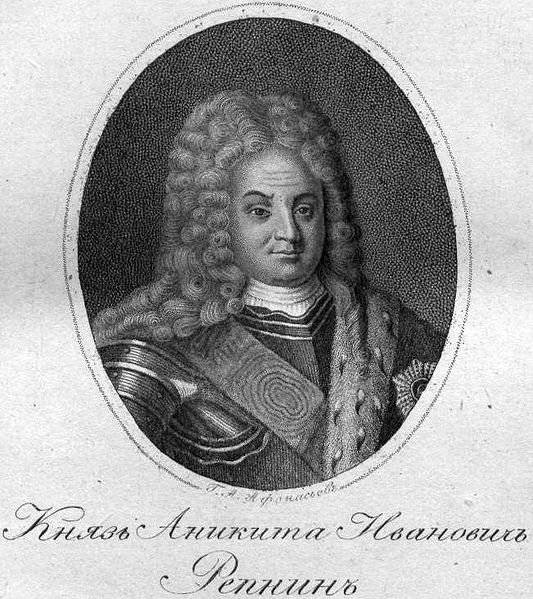
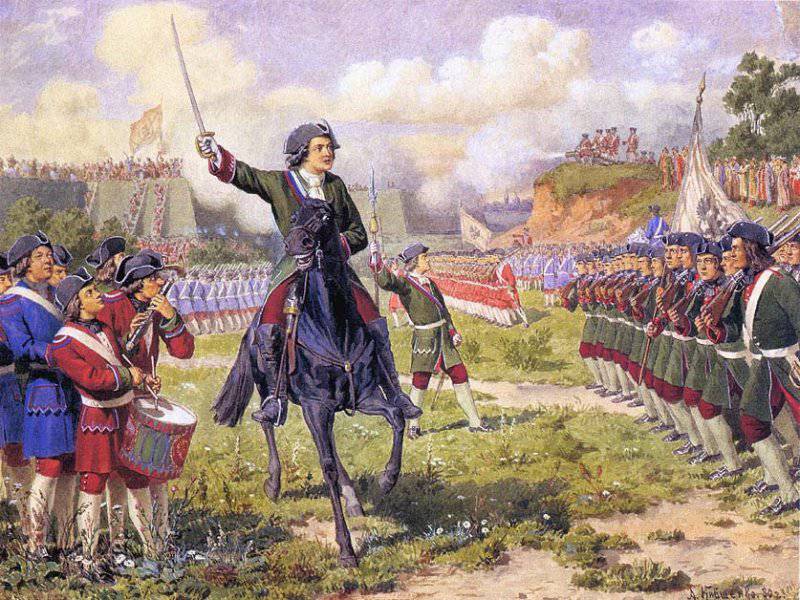
Information